Agentes Secretos y el Mural de Picasso is a captivating Spanish reader by Mira Canion, set during the Spanish Civil War. It intertwines art, mystery, and history, focusing on Pablo Picasso’s iconic mural Guernica and the supernatural Spear of Destiny. Designed for language learners, the book uses simple vocabulary and cognates to explore themes of war, art, and hidden symbols, making it both educational and engaging.
Background of the Book
Agentes Secretos y el Mural de Picasso is a Spanish reader written by Mira Canion, designed for language learners. Set during the Spanish Civil War, the story combines historical events, art, and supernatural elements. The book centers around Pablo Picasso’s iconic mural Guernica, which holds hidden clues to the location of the Spear of Destiny, a weapon of occult power. The narrative follows secret agents Paula and Luis as they race to decipher the mural’s symbols before Franco’s agents can seize the spear. Written in simple Spanish with cognates, the book is part of language learner literature, aiming to teach vocabulary and cultural context while engaging readers in a thrilling mystery. Its unique blend of art, history, and suspense makes it a standout educational tool. The story is set in 1937, aligning with the historical exhibition of Guernica at the International Exposition in Paris, adding authenticity to the plot. This book is widely used in Spanish classrooms to teach art, history, and language through an immersive storyline.
Genre and Target Audience
Agentes Secretos y el Mural de Picasso belongs to the genre of language learner literature, blending historical fiction, mystery, and supernatural elements. The story is designed for Spanish language learners, particularly at the intermediate level, with a focus on vocabulary acquisition and cultural immersion. The book’s engaging plot, centered around art and history, appeals to readers interested in the Spanish Civil War and Pablo Picasso’s work. Its simple language and use of English-Spanish cognates make it accessible while introducing learners to complex themes like propaganda, resistance, and the power of art. This unique blend of education and entertainment ensures the book is both informative and captivating for its target audience.
Overview of the Plot
Agentes Secretos y el Mural de Picasso unfolds during the Spanish Civil War, where Pablo Picasso’s mural Guernica becomes a focal point of intrigue. The story follows Paula and Luis, two young protagonists, as they uncover hidden symbols in the mural that lead to the supernatural Spear of Destiny. This ancient relic is said to grant immense power and determine the fate of Europe. As they decipher the clues, they are pursued by Francisco Franco’s secret agents, who seek to exploit the spear’s power. The plot intertwines art, history, and mystery, with Paula’s imagination and deciphering skills playing a crucial role in unraveling the enigma. The race against time to find the spear adds suspense, making the story both thrilling and historically rich.
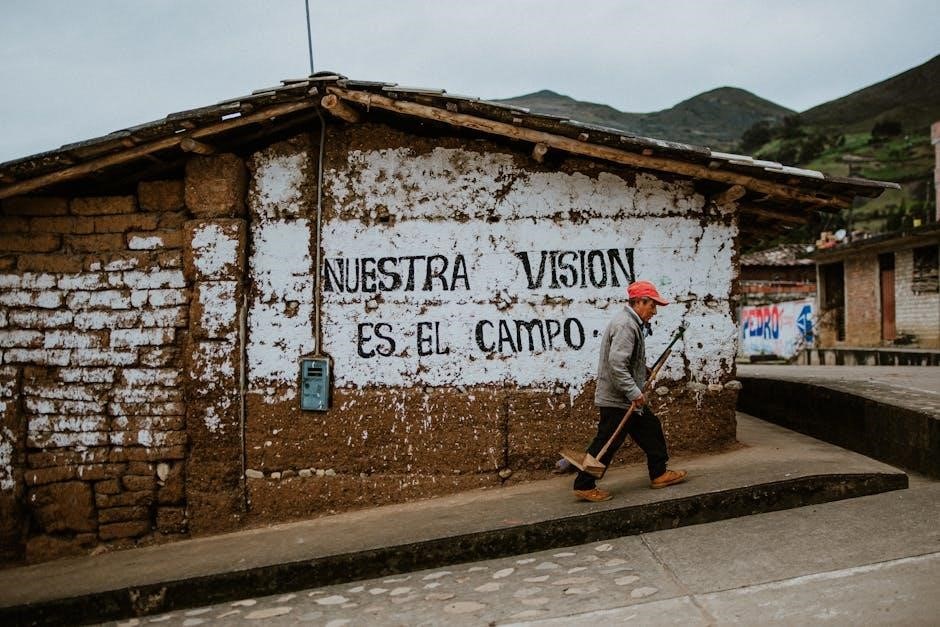
The Spanish Civil War and Its Significance
The Spanish Civil War serves as the dramatic backdrop, highlighting the clash of ideologies and the devastating impact on the nation. Its historical significance is woven into the narrative, providing context for the supernatural elements and the race to control the Spear of Destiny.
Historical Context of the Spanish Civil War
The Spanish Civil War (1936–1939) was a brutal conflict between the Republican government and the Nationalist forces led by General Francisco Franco. It emerged from deep political divisions, economic instability, and social unrest. The war became a symbol of the global ideological struggle between democracy and fascism, with international powers like Germany and Italy backing the Nationalists. The Republican side, supported by the Soviet Union, fought to preserve democratic values and resist authoritarianism. The conflict devastated Spain, causing immense human suffering and cultural loss. The war’s propaganda and art played significant roles, as seen in Picasso’s Guernica, which became an anti-war icon. This historical backdrop sets the stage for the novel’s suspenseful narrative, intertwining real events with supernatural elements like the Spear of Destiny.
The Role of Art in Propaganda and Resistance
During the Spanish Civil War, art became a powerful tool for propaganda and resistance. Both sides utilized artistic expression to influence public opinion and rally support. Pablo Picasso’s Guernica, displayed at the 1937 International Exposition, was a stark anti-war statement, condemning the bombing of the town of Guernica. Its vivid imagery and emotional impact made it a symbol of resistance against fascism. Similarly, murals and posters were used to spread political messages, while literature and music served as avenues for expressing dissent. Art not only reflected the horrors of war but also became a weapon in the ideological battle, inspiring hope and unity among those fighting for freedom. This context highlights the mural’s significance in the novel, where it holds hidden clues to the Spear of Destiny, blending art and history with supernatural intrigue.
The Supernatural Element: The Spear of Destiny

The Spear of Destiny, a legendary artifact with occult power, plays a central role in the story. Believed to have shaped the outcomes of battles throughout history, the Spear is said to grant its possessor control over Europe’s destiny. Both sides of the Spanish Civil War seek it, as its power could alter the war’s course. Picasso’s Guernica is revealed to contain hidden clues about the Spear’s location, making it a focal point of the protagonists’ mission. The supernatural element adds a layer of urgency and intrigue, blending historical fiction with mythological mystery. The Spear’s significance is heightened by its potential to determine not just the war’s outcome but the fate of Europe itself.
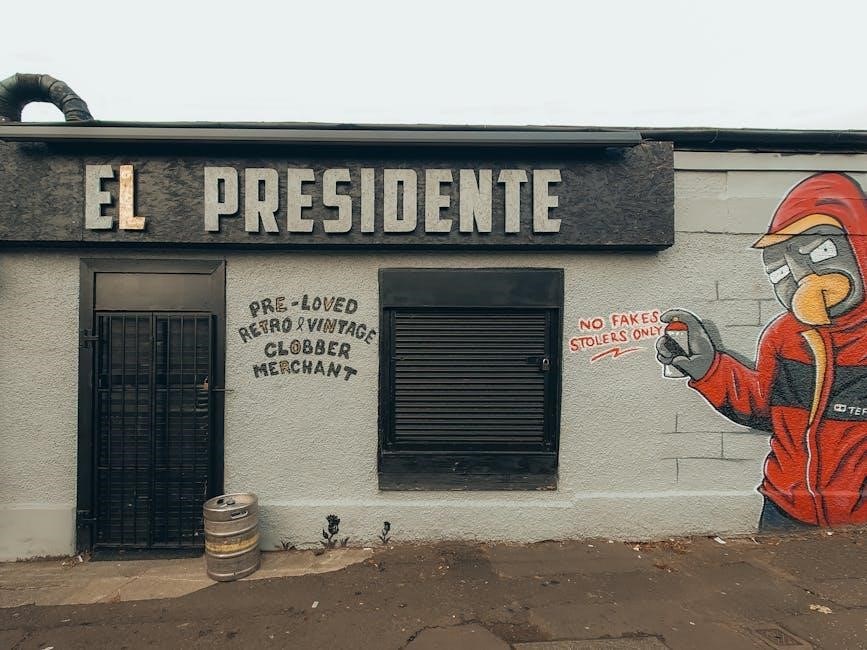
Pablo Picasso and the Mural “Guernica”
Pablo Picasso, a titan of 20th-century art, created the iconic mural Guernica, displayed at the 1937 International Exposition. The painting’s powerful anti-war message and hidden symbols are central to the story, revealing clues about the Spear of Destiny.
Picasso’s Artistic Style and Influence
Pablo Picasso, a pioneer of modern art, is renowned for his innovative Cubist style, which fragmented objects into geometric forms. His work, often politically charged, reflected his deep emotional responses to global events. In Guernica, Picasso employed a monochromatic palette to convey the horrors of war, creating a masterpiece of anti-war art. The mural’s powerful imagery and hidden symbols have become iconic, influencing countless artists and activists. Picasso’s ability to blend radical experimentation with profound meaning solidified his legacy as one of the most influential artists of the 20th century. His style continues to inspire, making Guernica a cornerstone of modern artistic expression.
The Creation and Display of “Guernica” at the 1937 International Exposition
Pablo Picasso created Guernica in 1937 as a response to the bombing of the town of Guernica during the Spanish Civil War. The mural, painted in monochromatic shades, was unveiled at the Spanish Republic’s pavilion during the 1937 International Exposition in Paris. Its powerful anti-war message and emotional intensity captivated audiences, making it an immediate symbol of resistance against fascism. The painting’s display was a strategic move to raise global awareness about the atrocities of the war. Despite initial mixed reactions, Guernica quickly became an iconic representation of peace and justice, solidifying its place in art history and aligning with the themes explored in Agentes Secretos y el Mural de Picasso.
Symbols and Hidden Messages in “Guernica”
Pablo Picasso’s Guernica is renowned for its complex symbolism, creating layers of meaning that invite interpretation. The monochromatic palette emphasizes death and chaos, while distorted human and animal forms convey the horrors of war. The screaming horse and fragmented bodies symbolize suffering and destruction. Picasso incorporated motifs like the bull, representing Spain, and the fallen warrior, signifying defeat. Lighting elements, such as the bulb and the fallen candle, contrast hope and despair. These symbols not only critique fascism but also serve as clues in Agentes Secretos y el Mural de Picasso, where protagonist Paula deciphers them to uncover the Spear of Destiny’s location, intertwining art and mystery in the story.

The Secret Agents and Their Mission
Francisco Franco’s secret agents are determined to seize the supernatural Spear of Destiny, racing against Paula and Luis to control its occult power and alter history.
Paula and Luis: The Protagonists
Paula and Luis are the dynamic protagonists of the story, tasked with unraveling the mysteries hidden within Picasso’s Guernica. Paula, with her keen imagination and sharp observational skills, excels at deciphering symbols, while Luis offers resourcefulness and bravery. Together, they embark on a perilous journey through historical sites like Sainte-Chapelle in Paris, where they uncover crucial clues about the Spear of Destiny. Their mission is not only to locate the spear but also to prevent it from falling into the wrong hands, particularly Franco’s secret agents. The duo’s collaboration and quick thinking are essential in solving the enigmatic puzzles tied to the mural, showcasing their growth and bond as they navigate the high-stakes adventure. Their dynamic ensures the story’s tension and unpredictability, keeping readers engaged. Paula’s creativity and Luis’s practicality make them a formidable team.
Francisco Franco’s Secret Agents and Their Agenda
Francisco Franco’s secret agents are relentless adversaries in the story, driven by a clear and dangerous agenda. Their mission is to seize the Spear of Destiny, a supernatural artifact believed to grant its possessor immense power and control over Europe’s fate. These agents are well-trained, cunning, and ruthless, stopping at nothing to achieve their objectives. Their presence adds a layer of suspense, as they closely trail Paula and Luis, intent on capturing the spear and exploiting its occult power to ensure Franco’s victory in the Spanish Civil War. The agents’ actions are calculating and efficient, making them formidable opponents who heighten the story’s tension and stakes. Their relentless pursuit underscores the high risks involved in the protagonists’ quest. The agents’ agenda is deeply intertwined with the war’s outcome, making their role pivotal in the narrative.
The Race to Decipher the Mural’s Clues
The race to decipher the clues hidden in Picasso’s Guernica mural forms the narrative’s core. Paula and Luis, the protagonists, use their wit and creativity to unravel the symbols embedded in the artwork, which point to the Spear of Destiny’s location. The urgency is heightened by Franco’s agents, who are equally determined to solve the mystery. The mural’s abstract imagery and hidden messages require a keen eye and deep understanding of Picasso’s style, making the deciphering process both challenging and thrilling. As the race progresses, the stakes grow higher, with the fate of Europe hanging in the balance. The intricate details of the mural serve as a puzzle that only the most skilled and imaginative can solve, adding layers of suspense to the story. The race becomes a test of intellect, courage, and time, pushing the characters to their limits.
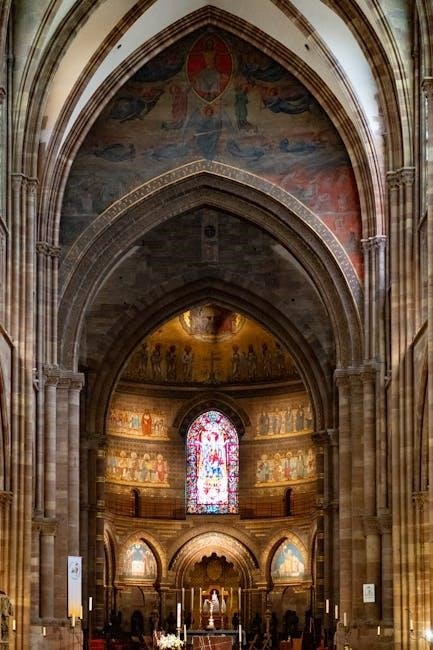
The Spear of Destiny and Its Occult Power
The Spear of Destiny holds immense occult power, believed to shape the outcome of battles and wars. Its presence in the story ties history, mystery, and supernatural elements together, driving the plot forward with urgency and intrigue.
Historical Mythology Surrounding the Spear
The Spear of Destiny is steeped in ancient mythology, often linked to legendary rulers and divine power. Its origins are shrouded in mystery, with tales of its creation tracing back to biblical times. Historically, it is said to have been wielded by prominent leaders, including Charlemagne and Adolf Hitler, who believed it granted them unparalleled power. The spear’s mythological significance lies in its supposed ability to shape the course of history, making it a coveted artifact for those seeking domination. Its legend has endured through centuries, captivating historians and inspiring quests to possess it. This mystical aura surrounds the spear, elevating it beyond a simple relic to a symbol of destiny and control.
Its Role in Shaping the Outcome of Battles and Wars
The Spear of Destiny is renowned for its alleged power to influence the outcomes of battles and wars. Historically, it is said to have been wielded by legendary leaders, granting them victory and dominion. Its presence in key conflicts has been mythologized, with many believing it holds the power to alter history. In the context of the Spanish Civil War, the Spear’s occult power becomes a pivotal element, as both sides seek to possess it to ensure their triumph. The race to control the Spear escalates tensions, making it a central plot device in the story. Its historical significance and mystical aura heighten the stakes, drawing characters like Paula and Luis into a perilous quest to decipher its secrets and determine the war’s fate.
Why the Spear is Central to the Story
The Spear of Destiny is central to the story as it embodies the supernatural element driving the plot. Its alleged occult power to determine the fate of wars and empires makes it a coveted object during the Spanish Civil War. Both Republican and Nationalist forces believe possessing the Spear could ensure their victory, heightening the conflict’s stakes. Paula and Luis’s mission to decipher the clues hidden in Picasso’s Guernica mural to locate the Spear becomes the narrative’s core. The Spear’s historical mythology and its potential to alter the war’s outcome create tension and urgency, making it a pivotal element that binds the story’s themes of art, history, and mystery together. Its significance extends beyond the plot, symbolizing the clash of power and destiny.

Paula’s Imagination and Deciphering Skills
Paula’s keen imagination and sharp deciphering skills are crucial in uncovering the hidden symbols within Picasso’s Guernica. Her creativity helps interpret the mural’s clues, advancing the mystery’s resolution.
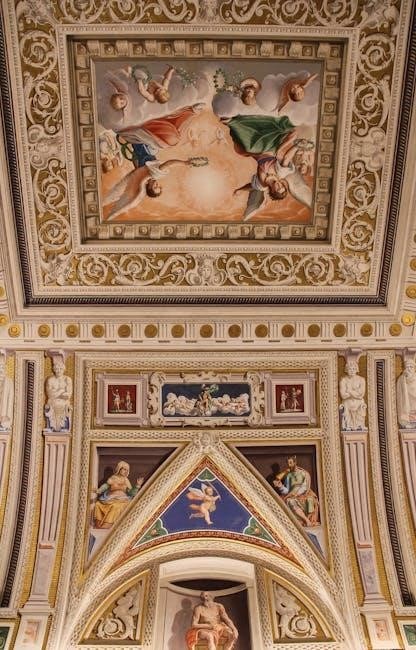
Her Ability to Interpret Hidden Symbols
Paula’s exceptional ability to interpret hidden symbols is central to the story. She deciphers the cryptic imagery in Picasso’s Guernica, uncovering clues tied to the Spear of Destiny. Her keen eye identifies elements like the screaming horse and broken sword, linking them to historical and supernatural themes. Paula’s understanding of art and history allows her to unravel the mural’s secrets, often staying ahead of Franco’s agents. Her interpretations not only advance the plot but also highlight the mural’s deeper meanings. This skill is crucial, as the Spear’s power to influence war outcomes makes her insights vital. Paula’s creativity and analytical mind make her a key player in the race to control the Spear, blending art and mystery seamlessly.
How Her Creativity Helps Solve the Mystery
Paula’s creativity is instrumental in unraveling the mystery surrounding Picasso’s Guernica and the Spear of Destiny. Her imaginative approach allows her to connect seemingly unrelated symbols and historical references, often leading to breakthroughs. For instance, her imaginative interpretation of the mural’s screaming horse and shattered sword reveals critical clues. Additionally, her creative thinking guides her and Luis to unexpected locations, such as the Sainte-Chapelle in Paris, where they uncover a vital clue about the Spear. Paula’s ability to think outside the box not only aids in deciphering the mural’s hidden messages but also keeps her one step ahead of Franco’s agents. Her imagination is a key driver of the story’s progression, showcasing how creativity can solve even the most complex puzzles.
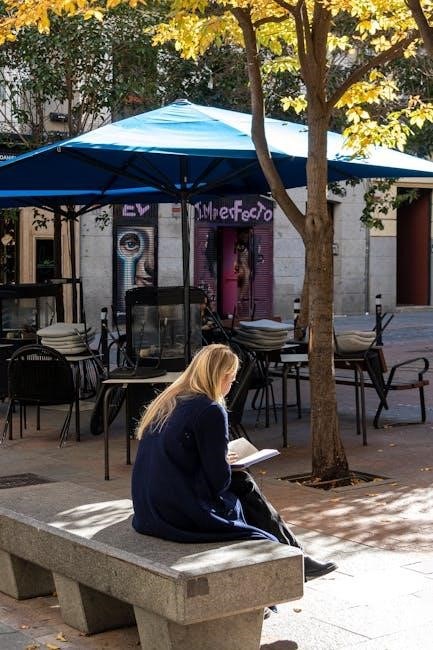
The Cultural and Educational Value of the Book
Agentes Secretos y el Mural de Picasso offers rich cultural insight into Spanish art and history while providing an engaging language-learning tool. Its simple vocabulary and historical context make it ideal for introducing learners to Spanish heritage and fostering an appreciation for art’s role in history. The book seamlessly blends education with entertainment, making it a valuable resource for both cultural enrichment and language acquisition.
Language Learning Through Storytelling
Agentes Secretos y el Mural de Picasso excels in teaching Spanish through an engaging narrative. The story seamlessly integrates language learning with cultural and historical context, making it accessible for learners. With only 100 new vocabulary words and numerous English-Spanish cognates, the book ensures comprehension while expanding linguistic skills. The plot’s mix of mystery, art, and history captivates readers, motivating them to learn. Simple sentence structures and contextual clues aid in understanding, while the story’s depth introduces learners to essential aspects of Spanish culture and history. This approach makes language acquisition feel natural and enjoyable, blending education with entertainment effectively.

Introducing Readers to Spanish Art and History
Agentes Secretos y el Mural de Picasso offers a unique blend of art and history, immersing readers in Spain’s rich cultural heritage. By focusing on Pablo Picasso’s Guernica, the book introduces learners to one of the most iconic works of 20th-century art, while explaining its historical significance during the Spanish Civil War. The narrative highlights Picasso’s artistic style and his political stance, providing context for the mural’s creation and display at the 1937 International Exposition. This integration of art history with a compelling storyline helps readers connect with Spanish culture, fostering a deeper appreciation for its artistic and historical milestones. The book serves as both an educational tool and a gateway to understanding Spain’s tumultuous past and its enduring artistic legacy.
Vocabulary and Cognates for Language Learners
Agentes Secretos y el Mural de Picasso is crafted with language learners in mind, featuring a controlled vocabulary of just 100 new words. This approach ensures that readers are not overwhelmed while expanding their Spanish lexicon. The text also incorporates numerous English-Spanish cognates, making it easier for learners to recognize and remember words. For example, terms like arte (art) and historia (history) are cognates that align with their English counterparts. This strategic use of vocabulary and cognates supports language acquisition while maintaining the story’s engaging and educational qualities. The book’s accessible language makes it an ideal resource for intermediate learners seeking to enhance their skills through immersive storytelling.
Agentes Secretos y el Mural de Picasso leaves a lasting impact as a unique blend of art, history, and mystery. Its educational value shines as a Spanish reader, making it a cherished part of modern Spanish literature while keeping the enigma of the mural and Spear of Destiny alive for future readers.
Impact on Readers and Language Learners
Agentes Secretos y el Mural de Picasso has become a valuable resource for Spanish learners, blending engaging storytelling with cultural and historical insights. Its simplified vocabulary and abundant cognates make it accessible to language learners, while its rich narrative introduces readers to Spanish art, history, and the significance of the Spanish Civil War. The book fosters language acquisition through context and immersion, encouraging learners to connect with Spanish culture. By integrating art and history, it sparks curiosity and deeper understanding, making it a memorable and educational experience. This unique blend of mystery, art, and history leaves a lasting impression, enriching both language skills and cultural knowledge for its readers.
Its Place in Modern Spanish Literature
Agentes Secretos y el Mural de Picasso holds a distinctive place in modern Spanish literature as a blend of historical fiction and educational content. Designed primarily for language learners, it bridges the gap between storytelling and cultural immersion, making it a unique contribution to Spanish-language education. Its integration of art, history, and suspense appeals to both native and non-native speakers, offering insights into Spain’s past while maintaining an engaging narrative. The book’s simplicity and focus on key vocabulary make it a popular choice for classroom use, ensuring its relevance in contemporary Spanish literature and education. Its innovative approach to combining art and history sets it apart as a valuable resource for learners and literature enthusiasts alike.
The Enduring Mystery of the Mural and the Spear
The interplay between Picasso’s Guernica and the Spear of Destiny creates an enduring enigma that captivates readers. The mural, with its hidden symbols, serves as a map guiding characters through historical and supernatural realms. The Spear’s occult power, tied to Europe’s fate, adds depth to the narrative, blending reality with myth. Paula’s ability to decipher the mural’s clues highlights the connection between art and mystery, leaving readers pondering the intersection of creativity and destiny. This intricate plot element ensures the story’s legacy, making it a timeless tale of art, history, and suspense. The mystery surrounding the mural and the Spear continues to intrigue, leaving a lasting impact on readers and scholars alike.